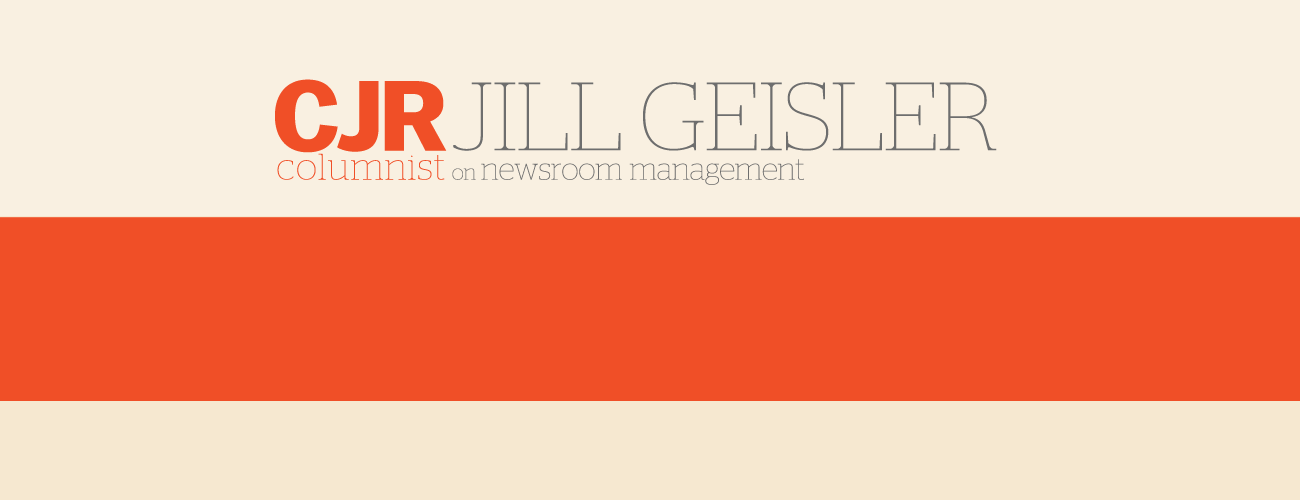As coverage of the presidential race enters the final stretch, CJR Editor Kyle Pope and our resident management guru Jill Geisler look at leaders who lie, social media missteps, and fact-checking the fact-checkers.
Kyle: Lying, and the media’s role in calling it out, has become a theme, oddly enough, of this presidential campaign. What about closer to home? Is it ever OK to lie as a manager, whether it’s a motivational compliment that’s somewhat exaggerated or a less-than-whole description of the state of the budget when it comes time for raises? Is there such a thing as a little white lie at work?
Jill: Here’s the reality of newsroom leadership: Good journalists come equipped with built-in b.s. detectors. As skeptics, they already presume managers occasionally inflate their praise and may keep some business or personnel info quiet. What they won’t tolerate are management trust-busters like these:
· Taking credit for the work or ideas of others.
· Shifting blame, especially to the rank-and-file, for their mistakes.
· Making promises on which they know they can’t deliver.
· Using corporate-speak (“We’re downsizing to grow!”) to spin a business decision that hurts people and journalism.
· Hoarding information; intentionally keeping people uncertain.
· Rationalizing an unethical journalism call because of bias, blindness or business pressure.
· Turning into a different person when their bosses are around.
That kind of deception kills credibility far more than a manager who says “I know you can do this” while her internal monologue is: “I’m about 75 percent sure and hoping for the best.”
Kyle: Reporters increasingly have taken to Twitter with personas that stretch, or even exceed, the bounds of acceptability in terms of expressing their own views about the candidates. We all know that being provocative and having a strong personality are par for the course on social networks, and we all want our reporters to develop robust followings. But at what cost? And how do we police this without squashing it?
Jill: Let’s drop the word “police” from this important conversation. Here’s what I mean: Journalists want their leaders to be coaches first, corrections officers last. Editors always exercise oversight, but it works best when they do so with a light touch and staff doesn’t live in fear of being busted.
So how does that work when it comes to social media personas?
As organizations push their team members to develop a voice and presence on social media, managers need to do solid front-end work. Talk early and often about what’s in bounds and what’s over-the-edge. Discuss how easy it is to slip from “attitude” to “advocacy,” showing examples of each. Think in terms of “thou shalt” – based on values that are openly, brazenly discussed without fear of sounding corny or platitudinous, rather than “thou shalt not,” which inhibits creativity.
Build what I like to call a culture of responsible risk-taking.
Have conversations, as many newsrooms are in this election year, about being courageous in calling out candidates’ deflections and deceptions. But recognize that it’s easier to do that in longer form, contextual and analytical journalism, and trickier to carry off in a few characters. But that’s no reason not to try. We wisely invest in studying and teaching the elements of great investigative and in-depth reporting. How about looking at the shoe-leather and social media efforts of, say, the Washington Post’s David Farenthold as a tutorial?
Kyle: Finally, fact-checking, and reporters’ responsibilities around it, also have become polarizing this cycle. But what about fact-checking ourselves? How well are news organizations doing at policing themselves and letting their readers or viewers know when they slip up? Corrections columns in print newspapers and magazines have notoriously been shrinking, and the news organizations have been called out for slipping corrections into digital copy without notifying readers that it is happening. What is the new best practice?
Jill: This one seems like a no-brainer. Show your math. Show your corrections. Track your amendments and make them transparent. If you don’t others will, whether it’s a site like NewsDiffs or an interested citizen with a cached copy or a screen grab.
Of course, it’s easy for me to say this from the sidelines. I know that the content management systems of media outlets vary. If a CMS is built to allow story edits but not much more, then visually highlighting significant story changes may not be possible. But an editor’s note is always an option. Telling the story of your misdeed – and apologizing effectively – can protect credibility.
Here’s why that’s so important: When a news organization says nothing about the “why” of a change or correction, others can fill the gap with speculation and misinformation. It’s better for the media outlet to say, “We messed up or modified” than to hear a critic cry, “Gotcha!”
Jill Geisler coaches managers worldwide. She holds the Bill Plante Chair in Leadership and Media Integrity at Loyola University Chicago. She’s the author of the book, Work Happy: What Great Bosses Know, and the “Q&A: Leadership and Integrity in the Digital Age” podcasts on iTunes U.

